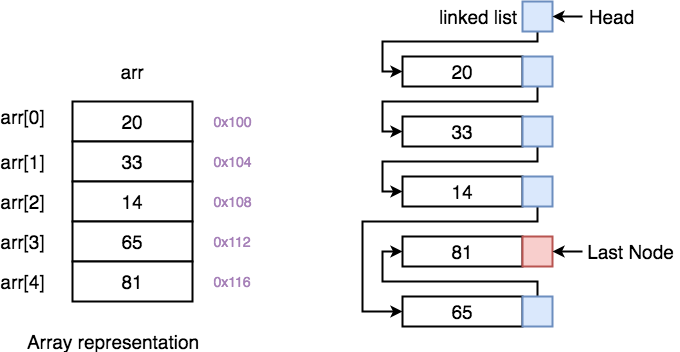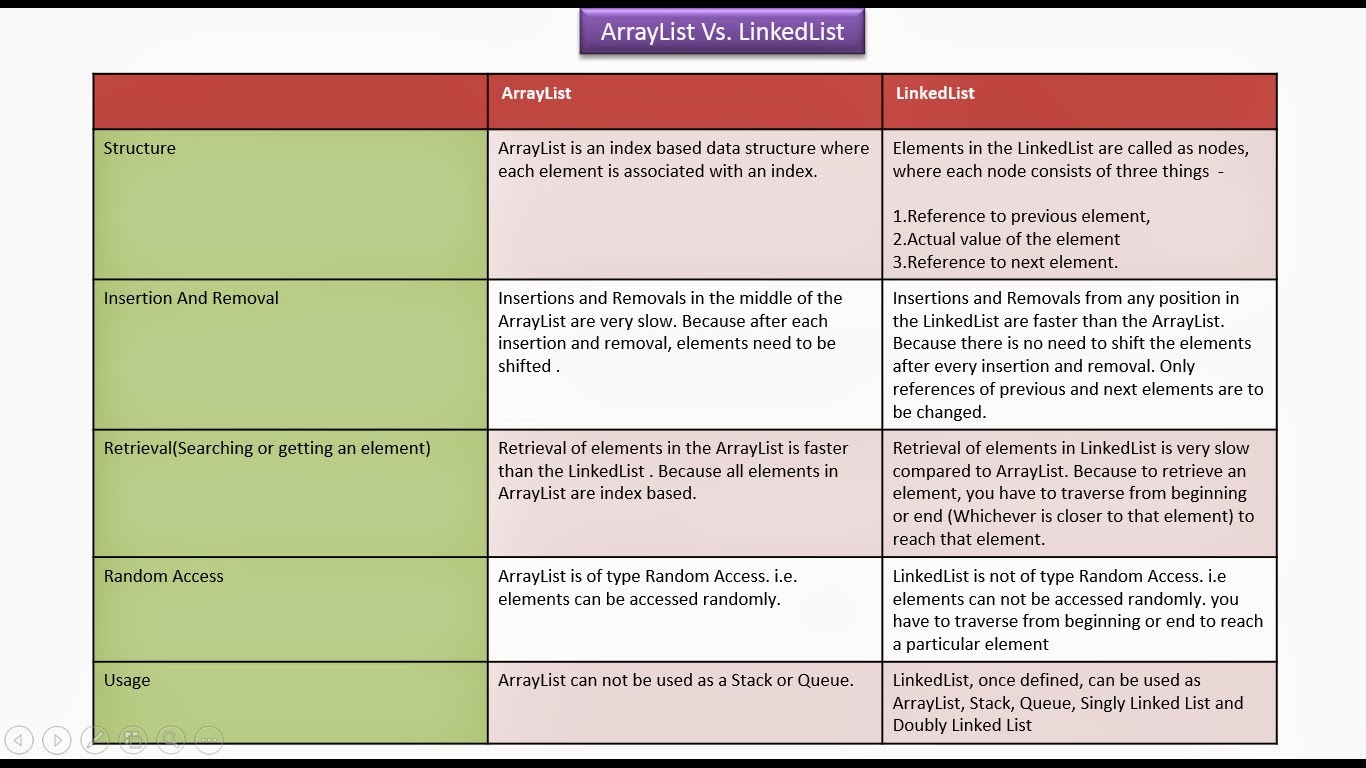

Vector data structure internally uses an array of some user defined size let Stacks, Queues, and Linked Lists 24 Implementing Deques with Doubly Linked Lists (cont. , the array has more elements than the list), the element in the array immediately following the end of the list is set to null. Both Linked List and Array are used to store linear data of similar type, but an array consumes contiguous memory locations allocated at compile time, i. the array elements are the numbers A dynamic array is a data structure that allocates all elements contiguously in memory, and keeps a count of the current number of elements. LinkedList implements it with a doubly-linked list. Implementing a Queue in Java using Arrays and Linked Lists. After transforming the linked list to an array it becomes as easy as swapping two integers in an array then rebuilding the linked list. Now move the head node to point to the next of current. This is the older, pre-Java 9 approach I used to use to create a static List in Java (ArrayList, LinkedList): Depends on which operation you are referring to. Implementing all operations in a Stack using Linked List Arrays and Linked Lists both are linear data structures, but they both have some advantages and disadvantages over each other. Array supports Random Access, which means elements can be accessed directly using their index, like arr for 1st element, arr for 7th element etc. Then we will iterate the array one by one and create a node for each element and append it in last node’s next pointer. then, we have converted this LinkedList to array arr using toArray() method. Use add() method to add components into the LinkedList class. The parameter 'a' represents the array in which the elements of the list will be stored. ArrayListuses the Array data structure, and LinkedList uses the DoublyLinkedList data structure.

toArray(strArray) Actual LinkedList: Created Array content: First Second Third Random > List Of All LinkedList Sample Programs: In the block above, the new LinkedList statement creates a linked list.

In fact, an ArrayList is internally supported by an array. You can convert a LinkedList of any type (such as double, String, int etc) to an array of same type. Random accessing is not possible in linked lists. Here is an example: As you can see, each element in the linked list is actually a separate object while all the objects are linked together by the reference field in each element. asList( "Hello", "world" )) I show my older approach below, but if you’re using Java 7 or Java 8, this seems like a good approach. asList() method will convert an array to a fixed size List. For example, to store five integers, the size requirements are as follows: Size required for an array = 5 * 4 bytes = 20 bytes. This will lead further differences in performance. There are benefits to using a linked list over an array, and benefits for using an array over a linked list. The components are not stored in the neighboring address and it is stored as containers. Both Linked List and Array store linear data of similar type, but an array believes in consuming contiguous memory locations allocated at compile-time.


 0 kommentar(er)
0 kommentar(er)
